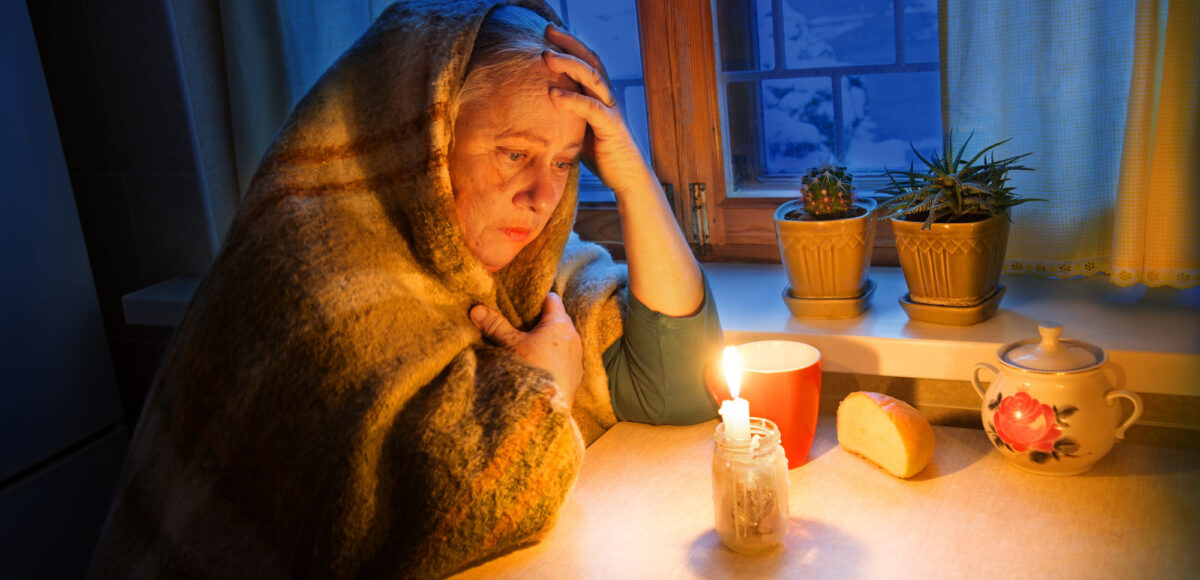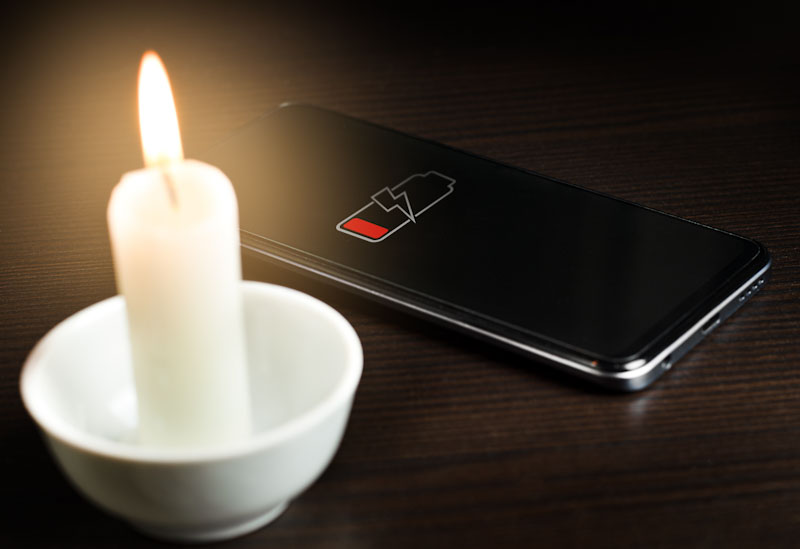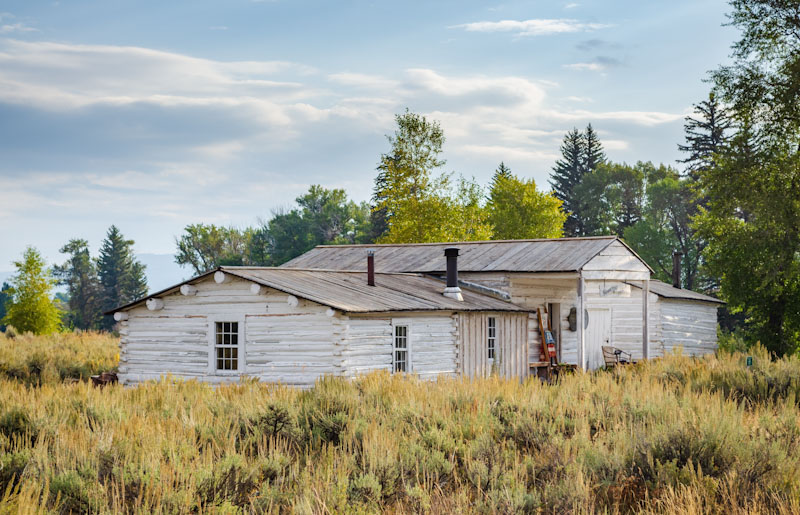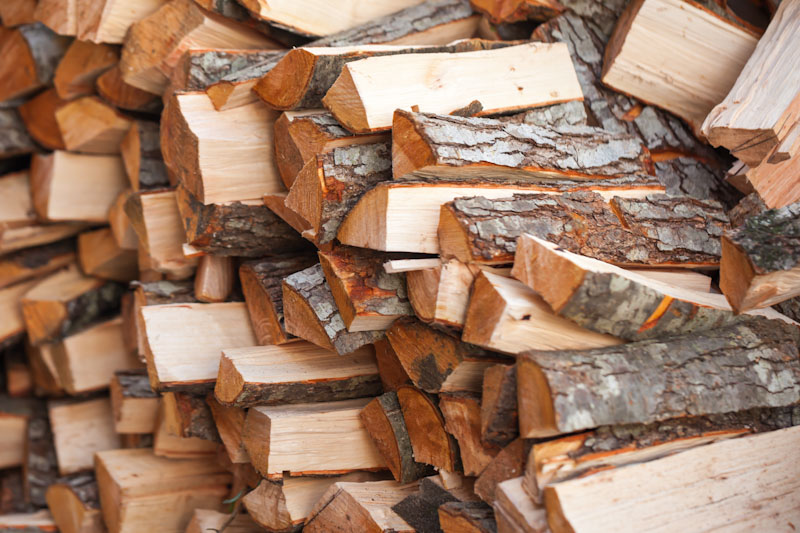There’s a bit of a tendency in the prepping and survival community to think big, when we think of survival. We’d much rather talk about surviving a TEOTWAWKI event, than surviving the common problems we all face. Perhaps we’ve been infected by Hollywood a bit here, in that the normal just isn’t all that exciting. But normal survival situations, of the type that people face every day, just aren’t anywhere near as exciting or attention grabbing, as surviving through a blackout in the winter.
As we all know, winter is coming. Here where I live, we’ve already had a couple of cold spells. Trying to keep my wife warm brought Winter Storm Uri to mind, which hit the nation just a few short years ago.
Uri hit Texas more seriously than any other part of the country. Part of that was due to Texas having a separate electric grid, but another part is because most Texans really aren’t prepared to deal with the cold… especially when the power goes out. That lack of preparation turned what should have merely been a big inconvenience, into a life-threatening situation that claimed the lives of at least 246 people.
As preppers, keeping our homes warm when there is no power is something we all talk about. The common answer is to use wood for heating our homes. Hopefully you’ve already installed a wood-burning stove in your home and have a goodly stock of firewood. If not, there’s probably not much time left before the Biden Administration manages to outlaw them. Even if you can’t install it now, try to buy one, so that you’ll have it available to install later. Buy the most energy-efficient model you can, so that you’ll get the most possible heat from the wood you burn.
But What if You Can’t?
There are a lot of people who can’t put in a wood-burning stove, for one reason or another. Somewhere around 36 percent of American households lives in rented homes, between single-family homes and apartment dwellers. Few landlords will allow the installation of a wood-burning stove in their property, even knowing that it will increase their property value. They don’t want to risk a poor job being done and don’t want to accept the fire risk that is believed to be associated with a wood-burning stove.
That means finding an alternative heat source. We all know that it’s not a good idea to use your stove and oven for heat, or to bring the barbecue grille inside as a makeshift fireplace. The bigger danger with both of those options isn’t the fire danger; but rather the danger of asphyxiation. Killing yourself, to try and save your life, isn’t very efficient. Of course, if you have an electric stove, rather than gas, it’s not going to provide any heat when the power is out anyway.
Fortunately, there are other options open to us. Two that I’ve used very effectively are kerosene heaters and propane heaters. Kerosene heaters are portable heaters that burn kerosene. That works out great in areas where you can buy kerosene as a fuel oil; but I wouldn’t recommend it to the people in Texas. As best as I’ve been able to find out, the only kerosene available anywhere in Texas, is through paint stores and lumberyards that sell paint. That’s a very expensive way to buy kerosene. Up north, on the other hand, kerosene can be bought in some gas stations and propane filling stations as a fuel, at a very reasonable price.
Propane works well too and can be bought anywhere, as it is used for other things, like gas barbecue grilles. The one thing you’ve got to be careful about thought, is making sure that your propane heater is rated for indoor use. Kerosene patio heaters cannot and should not be used indoors. On the other hand, I have a small propane heater that’s rated for indoor use and will keep my 400 square foot family room toasty warm.
There is a drawback to these small propane heaters though. That is, they run off of one-pound propane bottles, which cost somewhere around $5 each. That can get a bit expensive, even when we consider that it’s better than freezing to death. There is a cost-effective solution though. Buy an adapter, which allows you to fill those little bottles off of a 20-pound propane tank (the kind used for barbecue grilles). That will take the cost down from $5 per bottle to about $1 per bottle.
In any emergency situation, we shouldn’t be worried about heating our whole home, but rather move into a small part of our home and keep that warm. Heating your whole home, using emergency measures, is beyond the realm of being realistic. On the other hand, it’s actually rather easy to heat one or two rooms and close off the rest of the house or apartment temporarily.
There’s More to it Than Producing Heat
While everyone focuses on producing heat, that’s not the big issue. A much bigger issue is keeping your home from losing the heat that you’re creating, especially during a time of crisis, when you can’t produce unlimited heat.
Let’s face it, most of our homes leak a lot of heat. Some of that is due to the design of our homes and some is due to what we could call maintenance issues. We need to deal with both, especially in our designated “cold weather survival room.”
When I talk about maintenance issues, I’m talking about air leaks, usually around doors and windows. These are usually fairly easy to find, especially when it is windy outside. The cold air you feel blowing into your home is a sure sign that there’s an air leak somewhere. Chances are it is around a door or window, where the weatherstripping has either become damaged or has become ineffective due to the house settling and increasing the gaps around those doors and windows.
Repairing poor weatherstripping is easy, with self-stick foam weatherstripping. That may not be as good as the original, but it doesn’t cost much and can be put in, I a matter of moments. That makes it worth using.
After that, be sure to check your attic insulation. If your home is more than a few years old the attic insulation may have settled, reducing its R-value. It doesn’t take much to blow in more insulation and the effort pays in dividends, both in a warmer home and in reduced energy costs.
Ok, so that’s the “normal” stuff; but there’s much more that we can do to keep our homes warm when the power is out and we’re trying to get the most out of our emergency heating.
Start by dealing with the worst insulated parts of that room. That is, the windows and doors. The insulating value of windows, even triple-pane windows, is dismal and doors aren’t great either. While it may not be possible to bring those up to the same insulating value as the walls, hanging a blanket over the windows, especially a thick blanket, will go a long way towards helping to keep the heat in. While you’re at it, roll up a couple of towels and put them at the bottom of the doors, sealing off that air leak.
Don’t forget about the doorways leading into the rest of your home. A lot of heat can escape through those, if they are left open. Hang some blankets over those as well, making sure that the blanket is wider than the doorway opening. It makes no sense to lose heat to parts of the house you’re not using.
Don’t Forget the Most Basic Insulation
The most important part of all this is the one that people are the most likely to forget; that is, dressing warmly. I’ve spent a lot of time in Mexico, where most of the people I know don’t have heat in their homes. They regularly wear their coats indoors on cold days, keeping themselves warm.
It’s always better to dress in layers, if we want to stay warm. Those layers of clothing trap air in-between them, helping increase the insulation you get from the clothing. Don’t forget to throw a blanket over yourself too, if you’re sitting in one place. For that matter, a blanket can go a long way towards keeping you warm in the car, when you have to go out.
Speaking of blankets, that should be one thing that any prepping family has plenty of. There’s no such thing as too many blankets, when a cold spell hits and the power is out. The thicker the blankets the better. You can often find them at garage sales, where people sell them, when they’re going for a new style. That’s okay, survival has no style; just warmth.
Use Food for Heat Too
Finally, make sure you eat in a way that will help keep your body warm. Cold weather is not the time to be drinking iced tea or cold sodas. Drink warm drinks as much as possible and eat warm food whenever you can. Your body will be needing lots of carbs, so that your muscles can convert that energy to heat. While your body can pull some of those from fat reserves, it can’t do that anywhere near fast enough. More than half the carbs your body needs, or one-fourth of your total caloric intake, has to come from carbs that your body can process into simple sugars quickly.










radar | December 7, 2023
|
Yep! I agree with everything you said; everything. If one is building a new house, one can check with the local jurisdiction about adding a “back-up” heater downstream of your regular heater and possibly using the same exterior venting or separate venting. Maybe it would be large propane tank (in ground) heat system downstream of a natural gas heater. I’ve heard of people adding wood stoves (such as in a basement) downstream of natural gas. In my in-law’s house (a turn of 1800s century to 1900s) their old farmhouse had what was once called balloon heaters (typical of the 1930s-1950s) and they literally cut holes in their floors and put grates over the holes so the heat could rise quickly two levels to the upstairs bedrooms.
The least expensive heating is to wear wool clothing and blankets because body sweat. as that might happen usually will not create “chills” on a person like cotton would be more likely to do. Plus, as you said, pick up lots of blankets (because if you have enough underneath you (like if you were laying on a floor trying to use one or two rooms in a power outage you would suffer less conduction heat loss (from a cold floor). Sure sleeping bags can help. but I have sweated up plentifully even outdoors. and on the Minnesota side Mississippi river in the month of February and with 15 inches of snow on the ground (though we kicked away as much as we could to lay our tent down for that adventure..
Dusty | January 18, 2024
|
Great article! One thing usually left out is the fact that cold air is heavier than warm air, so it tends to collect and concentrate at or near the floor. Try to get as far up off the floor as possible. Also, because of this, if you don’t seal around your window or door insulation, the cold air coming through will just drain out the bottom and continue to chill the room. Try it sometime. Cover your window with a blanket, bubble wrap, or insulated curtains and feel the cold pouring out at the bottom.
Lea | November 30, 2024
|
It is also very important to keep your head covered when it’s cold. Body heat escapes from our heads. I find that if I keep my feet warm and my head covered, I warm up faster and I’m able to maintain the heat.
Travelin On | November 30, 2024
|
For emergencies there are other potential sources of staying warm too that don’t require heaters, though some would require the person to be fairly inactive. Bivvy bags work really well to throw back 80 – 90% of body heat at one, and if one tends to sweat in them, it’s also possible to wrap a blanket around you to keep from getting any of the moisture that collects in the bag from getting you wet. Being wet and cold weather is not the smartest either. The bivvy bags I got were nothing more than a full round bag one had to crawl into, and yes, it has a little hood area to go over the head to help keep the head warm too, if desired, but they aren’t that easy to get in or out of. For much easier ingress and egress to the bivvy bag, I cut two of them apart, sewed one side and the bottoms together and put in a full length zipper on the other side. Doing that, on one of the bags I left the hood section in place, cut the other hood section off and hemmed it, and then over the interior reflector material I put an insertable light fleece around the inside (minus the foot area (I’ve not taken shoes/slippers off when using it) to help prevent me from getting wet from any potential sweating, since the bag doesn’t breathe. I’ve used it for a couple of winters now and it works wonderfully. The fleece interior helps to keep me nice and warm and it also keeps quite as much heat from bouncing back at me, but it sure helps. The zipper allows some “breathing room” in the bivvy bag preventing the vast majority of the humidity collection in the bag. The revamping has turned the use of the bivvy bag into a very useful tool to stay warm when I’m not active. Much easier to get in/out of and for the most part, I can stay warm enough to do what needs to be done until I can get back into the bivvy bag and warmed up again. Yes, what I did makes it much more bulky, but I’m not using it for outdoor use or emergency use either, I am not hurt when using it, it is a heating source for me when it gets too cold during the winter. I’ve used it instead of turning electric heaters on. Yes, I’ve got a regular bivvy bag in the car should it ever be needed. Individually they’re small and compact, easily fitting in a vehicle glove box, but very durable, even stretchable and don’t snag or rip. They were well made when these were made. They were tested by people who crawled into them in their winter outdoor clothing and slept in them during the night in temps between 0°F and 20°F. Those folks reported they stayed perfectly warm even though they were sleeping on snow and more snow fell on them during the night. Yes, blankets are a great source of staying warm, but am addressing methods the author did not. If nothing else, have the common sense to go to bed and get under a bunch of blankets to stay warm, even if it is during the day. I agree, survival isn’t about comfort, it’s about staying alive until resources return to what we call “normal” living.
If things get really too cold for me, the layers I don’t keep me warm enough and I need to be out of the bivvy bag, and/or if there’s no electricity, I do have a VESTA indoor space heater/cook unit that runs off canned fuel that has been rated to be safe to use indoors. Since I live full time in an RV trailer, the ventilation is not a problem, there’s always leaks around the slides, and basically RV trailers are nothing more than cheap tin & fiberglass containers that cost way too much. They do shield one from vicious winds and outdoor storms, though, and in that way are very valuable. While the VESTA has been rated as safe to use indoors, they do still recommend cracking a window to allow some ventilation. Were it not for the already leaky trailer at best, I would be doing so. The heater portion has a fan that runs because of the heat, requiring no electricity and it will blow some very hot air out the heating end of the heater, hot enough to burn skin if one is stupid enough to put their hand in front of the heat egress port. I know, I was stupid enough to prove it. Yet the exterior of the heating unit, while warm, has a handle that is insulated when one needs to take the heater portion off and put the grill on for cooking purposes. When in use the unit sits on top of the cook stove and there’s plenty of air space around the unit to keep it safe to use. It will heat the small kitchen/living area I have. If desired, the same cans of fuel work wonders for cooking. The heater portion comes off the top of the unit and a grill goes on to hold a kettle, fry pan, coffee pot, etc., enabling hot food/drink going into the body as needed. Far more often I have used the unit as a cooking source rather than a heating source, thanks to most of the power outages we encounter where I am occurring during high wind storms during fall, winter and spring, and not during freezing weather, since we get very little freezing weather in this location. Something hot is appreciated during cooler weather for eating/drinking, and so when I get some water hot, not only do I fill the 30 oz Yeti mug, but a thermos or two for a 2nd/3rd cup of something hot to drink, as well as cooking food. Saves the used of canned fuel to fill some thermoses.
There are some other types of heating systems out there too to help people stay warm, but common sense is required no matter what system one chooses to use, following directions is also a superb idea, because as the author said, it isn’t efficient to kill or harm oneself while trying to survive.
GregE | November 30, 2024
|
A couple of additional options: wrt wood heating, you could try one of those wood tent stoves with a tent style roof vent to lead the chimney out of an open window frame without filling up with carbon monoxide, another option if you have camping gear is to pitch your tent in the lounge room to reduce the volume of air to be heated, this should act to exclude drafts too and might be a little more successful than hanging blankets, don’t forget to get as many bodies in the one space (family and pets) as that can make a big difference – ever hear of a 3 dog night?
Bas Shaw | March 31, 2025
|
Another option, move to smaller room and add tea lights to clay pots. You can find ways to set them up on the internet. At least it will stop the temperature from falling below zero.